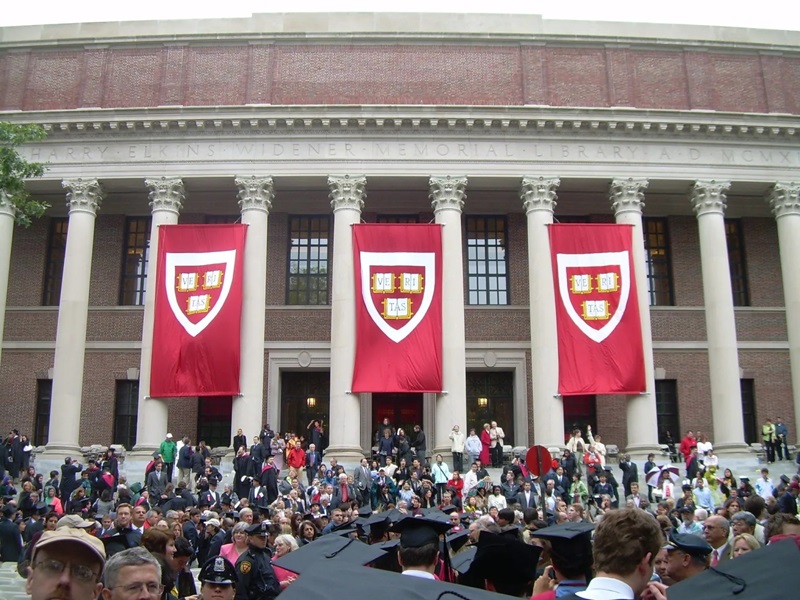Opinion
It’s time to end legacy admissions

They’re an affront to basic principles of fairness — and work against efforts to have more diverse student bodies
By James Murphy
December 7, 2024
WE ARE JUST learning how the Supreme Court decision banning the consideration of race in college admissions affected the composition of this fall’s first-year classes, but two things are already clear. First, many selective colleges saw large drops in Black enrollment. Second, if we want diverse student bodies, we need to remove as many barriers as we can.
That is what California just did. It became the fifth state–after Colorado, Virginia, Maryland, and Illinois–to ban legacy admissions, one of the more obvious barriers to diversity in college admissions. Massachusetts should become the sixth state.
Whether during its informal sessions this month or in the new two-year session that begins in January, the Legislature should prioritize a bill to ban public and private colleges from providing an admissions advantage to the children of alumni. Three-quarters of Americans and seven out of eight college admissions deans think colleges should not consider where an applicant’s parents went to college when they decide who to admit.
Banning legacy admissions is long overdue, but it’s even more imperative now after seeing the harm to campus diversity that has resulted from Students for Fair Admissions (SFFA) v. Harvard, the Supreme Court’s landmark 2023 decision that banned the consideration of race in college admissions.
My organization has been tracking the enrollment outcomes at highly selective institutions, and Massachusetts has seen large declines in enrollment of students of color. The percentage of freshmen who are Black declined at six of the seven most selective colleges and universities in the Commonwealth (Williams College was the exception). But it also declined or stayed flat for Asian American students at a majority of these schools. Hispanic enrollment was flat or slightly up at four institutions, but declined significantly at three of them.
Although it’s not easy to say why the enrollment of students of color declined at so many colleges, it may have something to do with three priorities of elite colleges that heavily tip the scales in favor of rich, white applicants: athletes, independent schools, and legacies. All three will need to be addressed, but getting rid of legacy preferences should be low-hanging fruit.
Legacy admissions disproportionately harm students of color and low-income students, because most of the beneficiaries are white and rich. Numbers are hard to come by when it comes to legacy preferences, since colleges hide the data, but we do know from the SFFA lawsuit that seven out of 10 Harvard legacies are white even though only four out of 10 applicants are white.
A recent study found that all legacies have a greater likelihood of getting into an Ivy League college, but legacies from the top one percent of income are five times as likely to be admitted as the average applicant with similar test scores, demographic characteristics, and admissions office ratings.
Colleges often say that legacies are highly qualified and the preference they get only functions as a tie-beaker. But consider the evidence from the SFFA trial.
Harvard’s admissions dean testified that a student with a top academic rating who also comes from a low-income household sees their chances of getting admitted go from 15 percent to 24 percent. That sounded pretty good until he acknowledged that a legacy with a similarly high academic ranking sees those odds go from 15 percent to 55 percent.
If you’re smart and poor, you’re still getting rejected by Harvard three out of four times. If you’re a smart legacy, however, you’re more likely to get into Harvard than you are to get rejected. That’s a heck of a tie-breaker.
The bill before the Legislature is not a cure-all, but it would make college admissions fairer and restore trust in higher education. Eliminating legacy preferences will not completely wipe out the harm done by the SFFA decision. Amherst stopped using legacy preferences in 2022 and MIT has never used the practice, and both saw large declines in Black and Hispanic enrollment. That might seem discouraging, but how much worse would it have been if they were holding spots for the children of alumni?

Legacy preferences are an opportunity cost for every college committed to enrolling a diverse class filled with highly qualified students, and they are an affront to a basic principle of fairness. It’s time to do away with them.
James Murphy is a Brookline resident and the director of postsecondary policy at Education Reform Now, non-partisan, a nonprofit think tank and advocacy organization.

